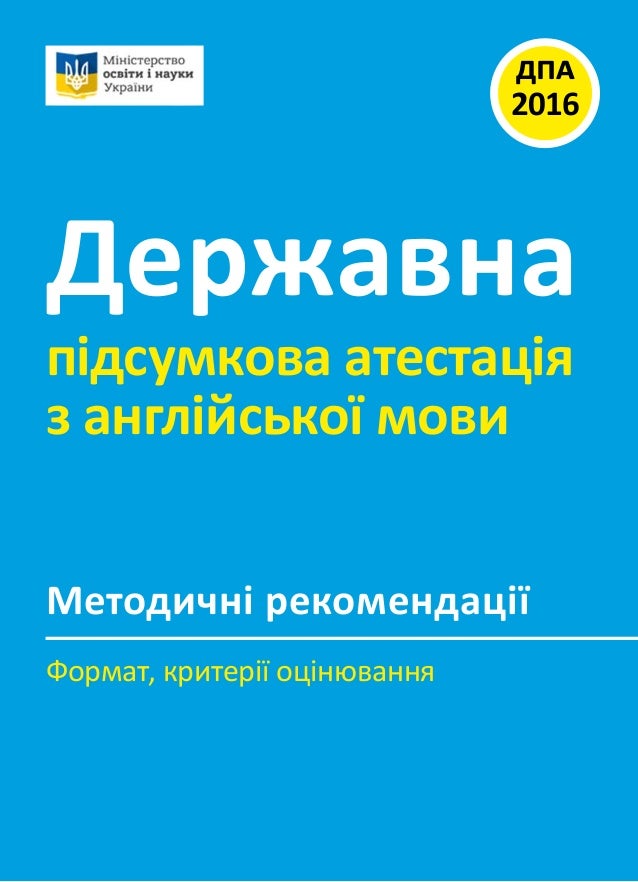АНГЛІЙСЬКА МОВА
Ласкаво прошу! Давайте знайомитись! Я, Лебедюк Ольга Юріївна, вчитель англійської мови. Рада вас вітати у своєму блозі! Маю надію, що кожен, хто завітає, знайде для себе щось корисне. Let's get acquainted! My name is Olha Lebediuk. I am an English teacher. I am very happy to meet you at my blog! I hope that everybody can find here something interesting and useful!
Сторінки
- Головна сторінка
- Songs and rhymes
- Нормативно-правові документи
- Методична скарбничка
- Фотогалерея
- 2016 - рік англійської мови в Україні
- ДПА - 2018
- For the Youngest
- Розробки уроків та виховних заходів
- Портфоліо
- Аудіододатки до підручників
- Навчальні програми
- Я - класний керівник
- Електронні підручники
- Олімпіади та конкурси
- Цікава граматика
- Календарно-тематичне планування
Translate
понеділок, 27 березня 2023 р.
неділю, 26 березня 2023 р.
середу, 1 березня 2023 р.
Learn English with songs
Автор: Лебедюк О. Ю., вчитель англійської мови КЗЗСО
«Дубищенський ліцей»
Learn English with songs
(Збірник пісень та завдань для
аудіювання)
Збірник містить 15 популярних пісень та
інтерактивні завдання до них. Завдання розроблені таким чином, щоб дати
можливість учням якнайкраще засвоїти представлені лексичні одиниці та граматичні структури. Для цього використовуються
різні типи завдань: заповнити пропуски, встановити відповідності, знайти помилки, поставити слова чи речення в правильному
порядку, обрати правильну відповідь, завдання на визначення
правильності/неправильності твердження, і т. д. До кожної пісні згенеровано QR код, за яким її можна знайти в мережі
Інтернет та прослухати.
Рецензенти:
Курта О. С вчитель англійської мови КЗЗСО «Дубищенський ліцей»
Contents
Introduction………………………………………………………………4
1. Shape of you
by Ed Sheeran……………………………………………..6
2. Blinding lights
by The Weeknd…………………………………………10
3. Save your tears
by The Weeknd…………………………………………12
4. Freedom by
Beyonce……………………………………………………14
5. Viva la Vida
by Coldplay………………………………………………..16
6. The sky full
of stars by Coldplay………………………………………..18
7. In my Plays
by Coldplay…………………………………………………20
8. So am I by
Ava Max……………………………………………………..24
9. Oh, my, my,
my…. By Taylor Swift…………………………………….26
10. Watermelon
sugar by Harry Styles………...…………………………….28
11. I don’t care by
Ed Sheeran ………………………………………………30
12. Love yourself
by Justin Bieber…………………………………………..33
13. Your song by
Elton John…………………………………………………35
14. New Ruls by
Dua Lipa……………………………………………………35
15. Merry Christmas
by Ed Sheeran and Elton John …………………………..39
Introduction
Learning a new language can be a daunting
task, but it doesn't have to be boring. Incorporating music into language
learning can be a fun and effective way to improve language skills. Let’s
explore the benefits of using songs in teaching English as a second language.
First and foremost, music is a universal
language that transcends cultural and linguistic barriers. It can be a powerful
tool for ESL teachers to connect with their students and create a more engaging
and immersive learning experience. Music can help students learn new
vocabulary, practice grammar, and improve their pronunciation.
Using songs in teaching English can also
provide a context for the language being used. The lyrics of a song often tell
a story or express an idea, which can help students understand the meaning
behind the words. In addition, songs can be a great way to introduce students
to different genres of music and different cultures.
Here are some specific ways that ESL
teachers can use songs in the classroom:
Vocabulary
Building: Songs can be a great way to introduce new vocabulary. Teachers can
choose songs that include words that the students may not know and provide them
with the meanings. Students can then practice using the new vocabulary in
context.
Pronunciation
Practice: Music can also help students improve their pronunciation. Teachers
can choose songs that have clear, distinct lyrics and practice singing along
with the song to improve pronunciation.
Grammar
Practice: Songs can be used to teach grammar in a fun and engaging way.
Teachers can choose songs that have a specific grammar structure, such as
conditional sentences, and have students listen for examples of that structure.
Cultural
Immersion: Music can be a great way to introduce students to different cultures.
Teachers can choose songs from different cultures and have students research
the culture and the history behind the song.
It's important
to choose the right songs for your students. Consider their age, cultural
background, and language level when selecting songs. Make sure the lyrics are
appropriate and the language used in the song is at an appropriate level for
your students.
In conclusion,
using songs in teaching English as a second language can be a powerful tool for
teachers and students alike. Music is a universal language that can help
students connect with the language and culture they are learning. It can make
language learning more fun, engaging, and effective. So why not add some music
to your next English lesson?
вівторок, 21 серпня 2018 р.
Make a class book
Make a paper-chain
Snake mobiles
Draw round and cut out a body part
середу, 13 квітня 2016 р.
Виховний захід "MEET SPRING! "
E is for Easter, coming soon,
Всі: May there always be sunshine,










